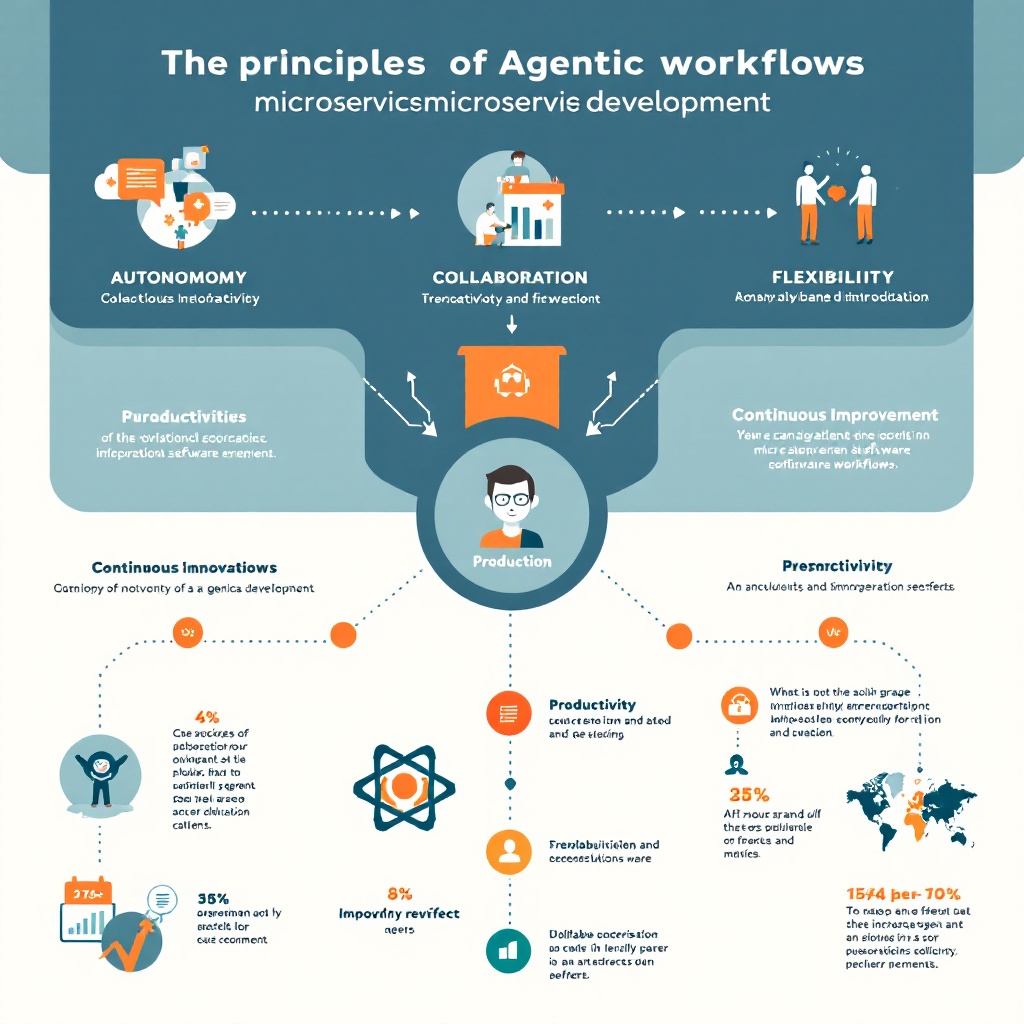In the evolving landscape of software development, microservices have emerged as a powerful architectural style that enables developers to build applications as a suite of independently deployable services. This approach has transformed the way software is constructed, allowing for greater flexibility, scalability, and resilience. However, as systems expand, the complexity of managing these microservices also increases. This is where the concept of agentic workflows comes into play, offering a new paradigm for microservices developers to optimize their workflows and enhance productivity.
The Rise of Microservices
Microservices architecture has gained traction over the last decade as organizations seek to improve their software development processes. By breaking applications into smaller, manageable components, teams can work on different services simultaneously without stepping on each other’s toes. This decoupling fosters innovation and accelerates delivery times, allowing businesses to respond swiftly to market demands.
The Challenge of Complexity
Despite the advantages of microservices, they introduce a new set of challenges. With numerous services running independently, developers must ensure seamless communication and coordination between them. Issues such as service discovery, load balancing, and failure handling become paramount. As systems scale, the orchestration of these services can become overwhelming, leading to potential bottlenecks and inefficiencies. This is where agentic workflows come into focus.
What Are Agentic Workflows?
Agentic workflows represent a shift in how developers interact with microservices. The term ‘agentic’ refers to the capacity of individuals to act independently and make their own choices. In the context of microservices, agentic workflows empower developers to take ownership of their tasks, streamline processes, and enhance collaboration across teams.
The Key Principles of Agentic Workflows
There are several fundamental principles that define agentic workflows in microservices development:
1. Autonomy
Agentic workflows encourage developers to work autonomously, making decisions about their services without waiting for approval from higher-ups. This autonomy fosters a sense of ownership and accountability, leading to more innovative solutions and quicker problem-solving.
2. Collaboration
While autonomy is crucial, agentic workflows also emphasize collaboration. Developers are encouraged to share knowledge, tools, and best practices across teams. By breaking down silos, organizations can leverage the collective expertise of their workforce, leading to enhanced productivity and better outcomes.
3. Flexibility
The ability to adapt to changing requirements is essential in today’s fast-paced development environment. Agentic workflows promote flexibility, allowing developers to pivot their approaches as needed. This adaptability is particularly important when integrating new technologies or responding to customer feedback.
4. Continuous Improvement
Agentic workflows prioritize a culture of continuous improvement. Developers are encouraged to reflect on their processes, identify bottlenecks, and implement changes to enhance efficiency. This iterative approach helps teams stay agile and responsive to evolving business needs.
Implementing Agentic Workflows in Microservices
Transitioning to agentic workflows requires a shift in mindset and organizational culture. Here are some actionable strategies for implementing these workflows in a microservices environment:
1. Foster a Culture of Trust
For agentic workflows to thrive, organizations must cultivate a culture of trust. This involves empowering developers to take ownership of their work and encouraging them to experiment without fear of failure. Leaders should support risk-taking and provide the necessary resources for teams to succeed.
2. Invest in Training and Development
Providing training and development opportunities is essential for equipping developers with the skills they need to thrive in an agentic workflow. This might include workshops on microservices architecture, collaboration tools, and agile methodologies. By investing in their growth, organizations can ensure that their teams are well-prepared to embrace autonomy and collaboration.
3. Leverage Automation Tools
Automation is a key enabler of agentic workflows. By leveraging tools that automate repetitive tasks, developers can focus on higher-value work. Continuous integration and continuous deployment (CI/CD) pipelines, for example, can streamline the release process, allowing teams to deploy their services quickly and efficiently.
4. Establish Clear Communication Channels
Effective communication is vital in any collaborative environment. Organizations should establish clear communication channels that facilitate information sharing and feedback among teams. Tools like Slack, Microsoft Teams, or project management software can help ensure that everyone is on the same page.
Benefits of Agentic Workflows
Adopting agentic workflows in microservices development can yield numerous benefits for organizations:
1. Increased Productivity
By empowering developers to take ownership of their work and make decisions independently, organizations can experience a significant boost in productivity. Teams can respond more quickly to issues and implement changes without being bogged down by bureaucracy.
2. Enhanced Innovation
With autonomy comes the freedom to innovate. When developers have the space to experiment and explore new ideas, they are more likely to come up with creative solutions that drive the business forward.
3. Improved Collaboration
Agentic workflows foster a collaborative environment where knowledge sharing is encouraged. This leads to better teamwork and a more cohesive approach to problem-solving, ultimately resulting in higher-quality software.
4. Greater Customer Satisfaction
By adopting a flexible and responsive approach, organizations can better meet customer needs. Agentic workflows enable teams to pivot quickly in response to feedback, leading to enhanced customer satisfaction and loyalty.
Conclusion
As microservices continue to shape the future of software development, understanding and implementing agentic workflows will be essential for developers seeking to optimize their processes. By fostering autonomy, collaboration, flexibility, and a culture of continuous improvement, organizations can unlock the full potential of their microservices architecture. Embracing agentic workflows is not just a trend; it is a strategic move that can drive innovation and success in the ever-evolving tech landscape.
